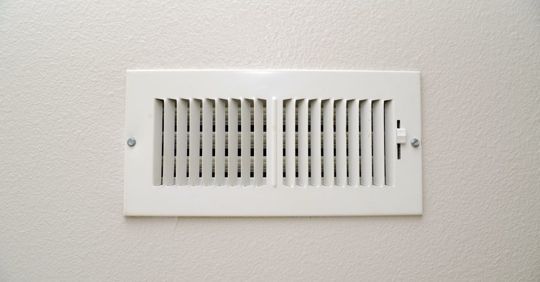
When it comes to energy efficiency, many homeowners try various strategies to lower their bills and improve comfort. One common practice is closing vents in unused rooms, based on the belief that it saves energy by reducing the workload on the HVAC system. But is this approach really a good idea? Let's explore the facts and discover whether the practice helps or causes more harm than good.
Why Homeowners Close Vents in Unused Rooms
The logic behind closing vents in unused rooms seems simple. By blocking airflow to spaces that don’t require heating or cooling, homeowners believe the HVAC system can redirect air to areas that do. On the surface, it sounds efficient, but the science behind HVAC systems tells a different story.
How HVAC Systems Are Designed
Your HVAC system is built to heat or cool the entire home as a balanced unit. The ductwork, vents, and equipment size are engineered to match the specific space, ensuring consistent airflow across all rooms. Closing vents disrupts this balance by increasing pressure in the ducts. This can lead to potential problems, including reduced efficiency and, in some cases, damage to system components.
Increased Duct Pressure
When vents are closed, the system still generates the same amount of conditioned air. The increased pressure forces the air to find other exit points, often leading to leaks in ductwork. Leaky ducts waste energy, defeating the goal of saving money.
Overworking the System
Modern HVAC systems rely on proper airflow to maintain optimal performance. When some vents are closed, the system may overwork, trying to push air where it can. This additional strain can cause higher energy usage, overheating of components, and an increased risk of breakdowns.
Common Myths About Closing Vents
Myth 1: It Saves Energy
Closing a vent doesn’t turn off airflow to that area. The system continues to produce the same amount of air, and that energy usage remains constant or even increases due to inefficiency.
Myth 2: It Cools the Rest of the Home Faster
Rather than improving cooling in other areas, closing vents disrupts the system's design, potentially resulting in uneven temperatures and hotspots around the home.
Better Alternatives to Save Energy
If energy efficiency is your goal, there are more effective and system-friendly strategies to try.
Seal and Insulate Ductwork
Leaks in ductwork are a major source of energy loss. Sealing and insulating ducts can help retain conditioned air and improve efficiency across the entire home.
Upgrade to a Zoning System
If you have rooms that are consistently unused, installing a zoning system allows you to control
airflow to specific areas through dampers and individual thermostats. This ensures efficiency without compromising your HVAC system.
Regular System Maintenance
Ensuring your HVAC system operates at peak performance is key to reducing energy waste. Scheduling routine maintenance helps catch problems early and keeps your system running efficiently.
Monitor Thermostat Settings
Program your thermostat to work smarter, not harder. Adjusting settings to match your home’s usage patterns can significantly reduce energy waste while maintaining comfort.
Contact Us for Professional HVAC Advice
While closing vents might seem like a simple way to improve energy efficiency, it often leads to more harm than good. Instead, focus on better strategies like zoning systems, duct sealing, and regular maintenance to achieve long-term savings. At
All Pro, we're here to help with all your HVAC needs, from system upgrades to professional tune-ups. Contact us today to learn how we can keep your home comfortable and efficient year-round.
